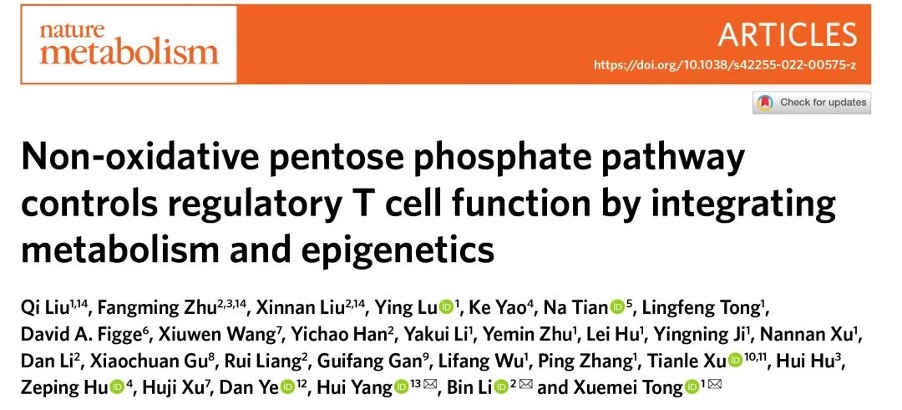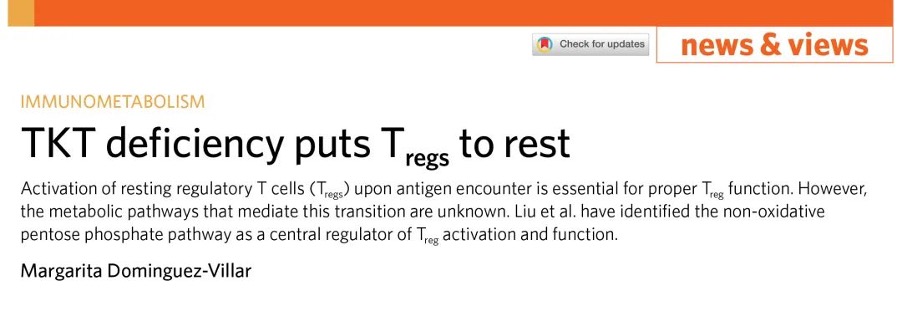Regulatory T (Treg) cells are critical for maintaining immune homeostasis and preventing autoimmunity. Here, we show that the non-oxidative pentose phosphate pathway (PPP) regulates Treg function to prevent autoimmunity. Deletion of transketolase (TKT), an indispensable enzyme of non-oxidative PPP, in Treg cells causes a fatal autoimmune disease in mice, with impaired Treg suppressive capability despite regular Treg numbers and normal Foxp3 expression levels. Mechanistically, reduced glycolysis and enhanced oxidative stress induced by TKT deficiency triggers excessive fatty acid and amino acid catabolism, resulting in uncontrolled oxidative phosphorylation and impaired mitochondrial fitness. Reduced α-KG levels as a result of reductive TCA cycle activity leads to DNA hypermethylation, thereby limiting functional gene expression and suppressive activity of TKT-deficient Treg cells. We also find that TKT levels are frequently downregulated in Treg cells of people with autoimmune disorders. Our study identifies the non-oxidative PPP as an integrator of metabolic and epigenetic processes that control Treg function.



paper link: https://www.nature.com/articles/s42255-022-00575-z